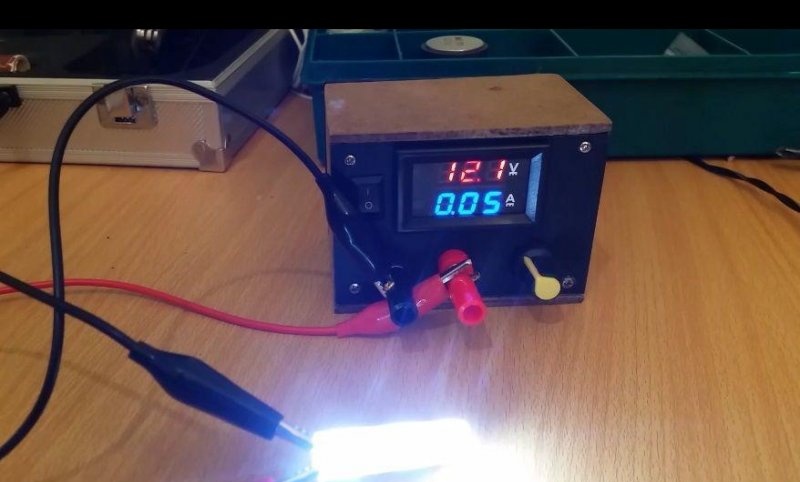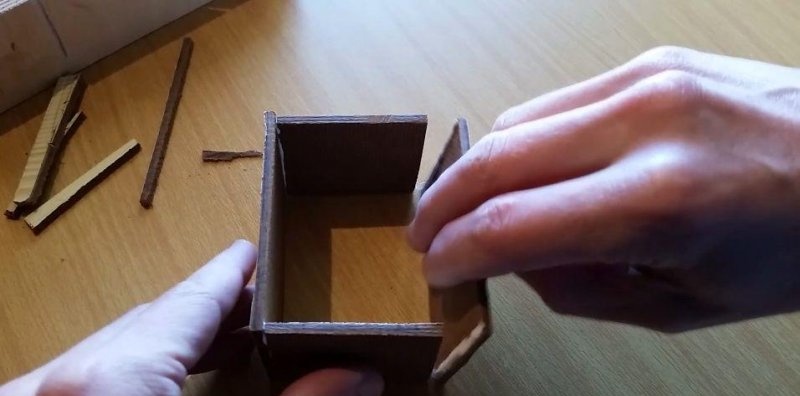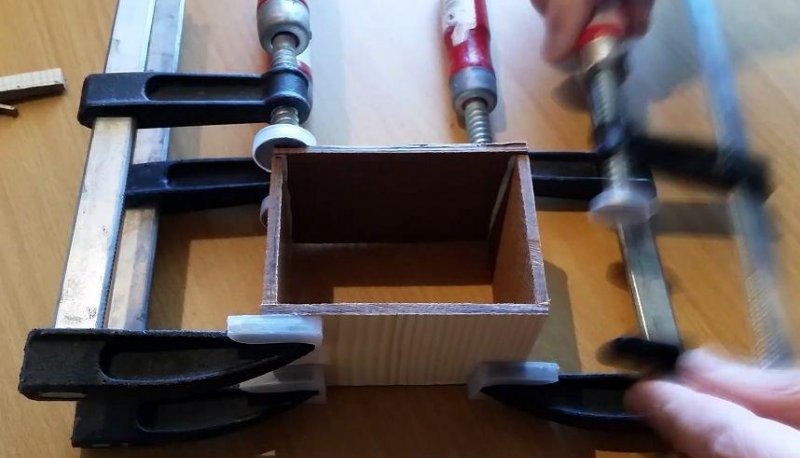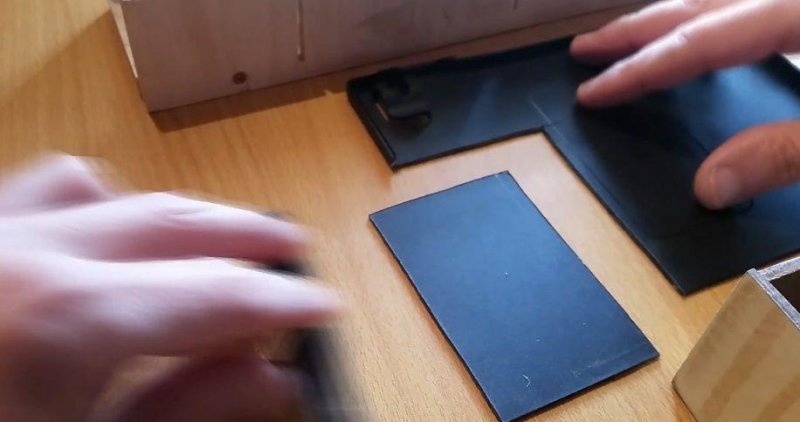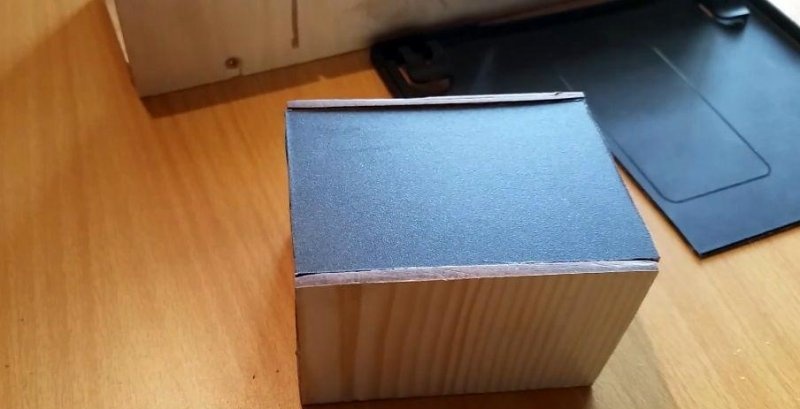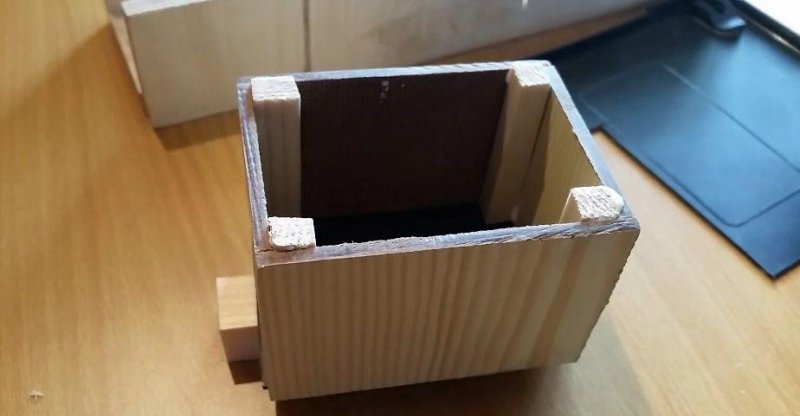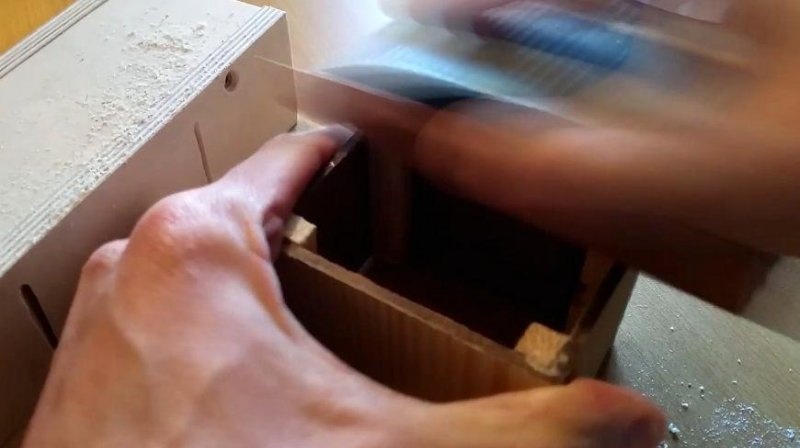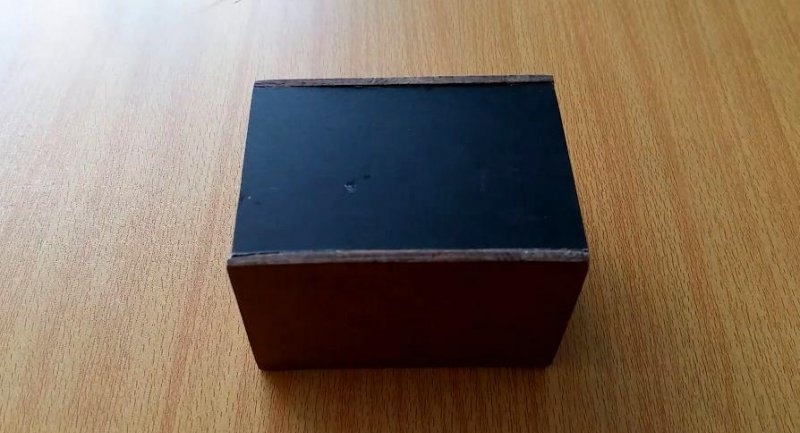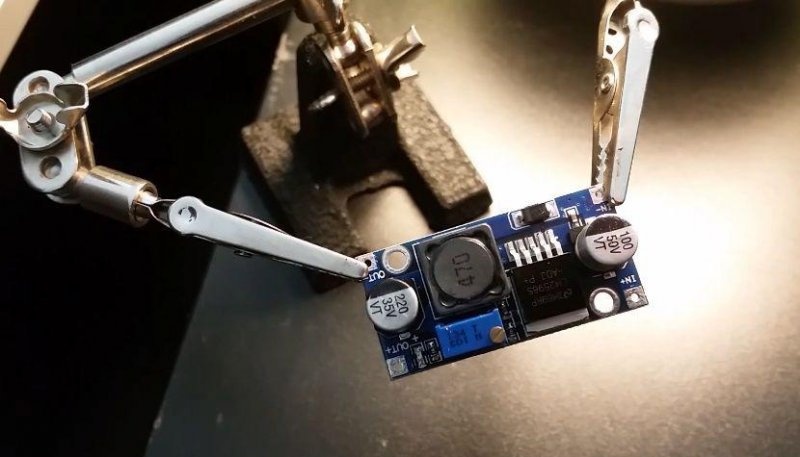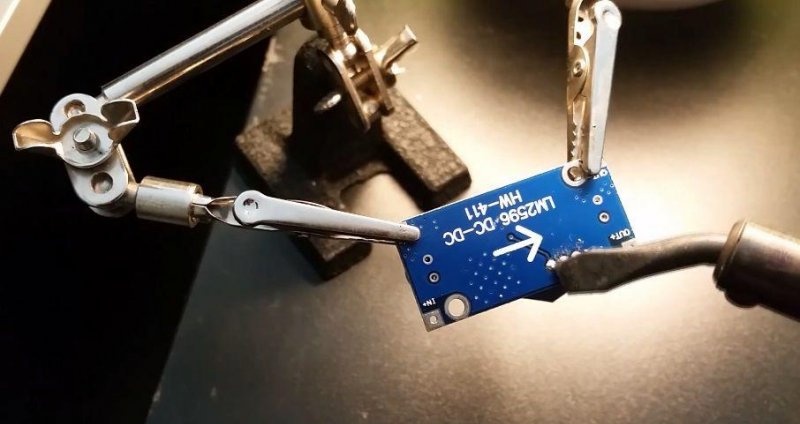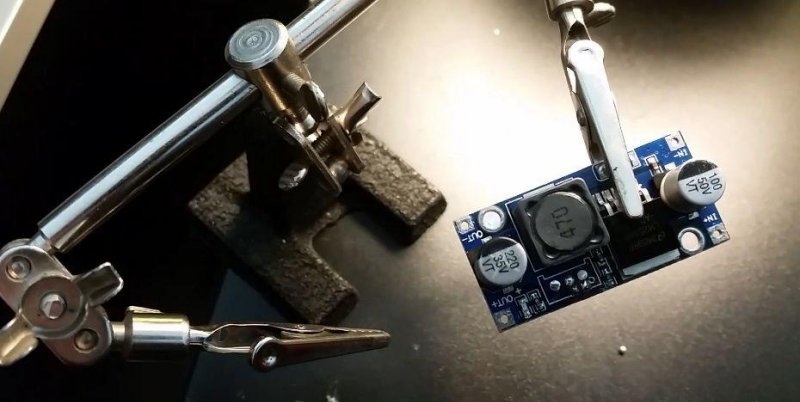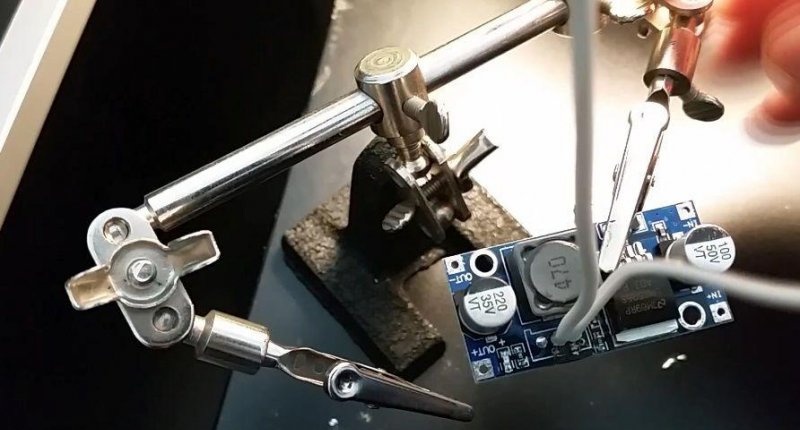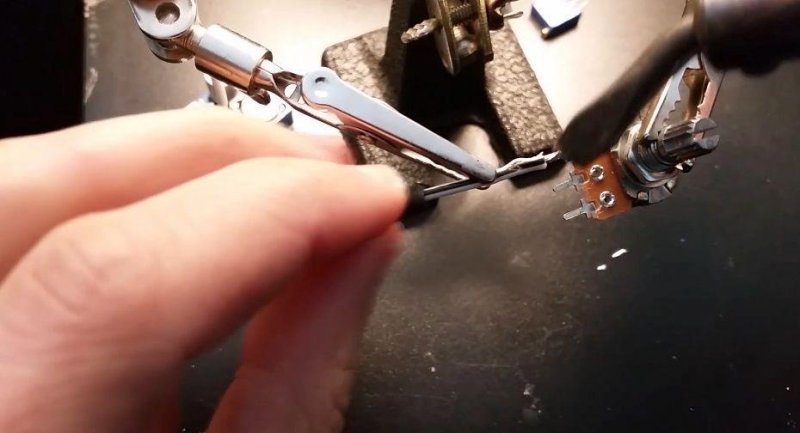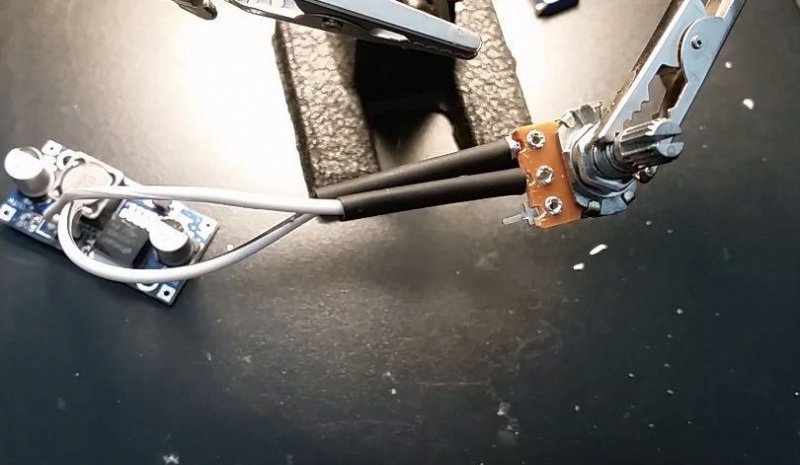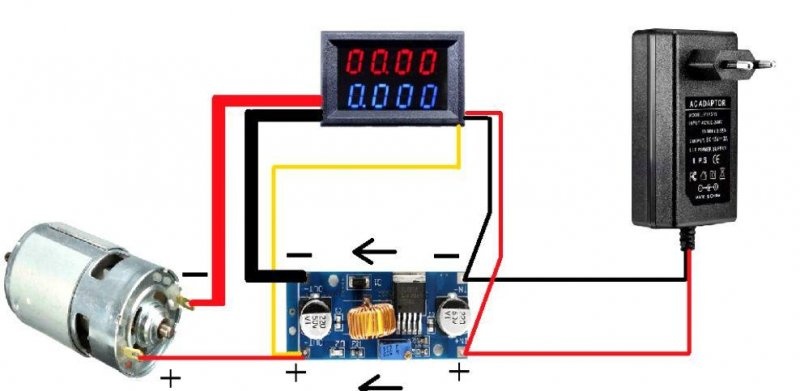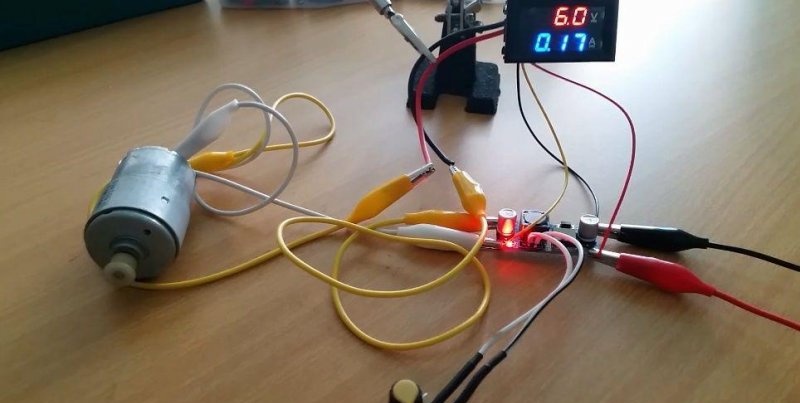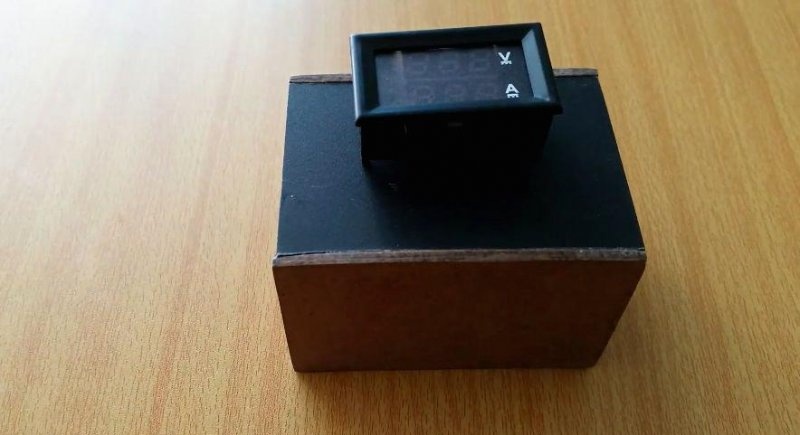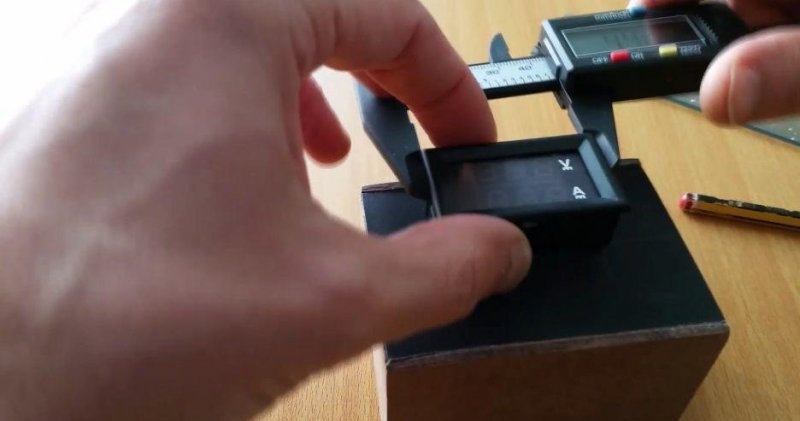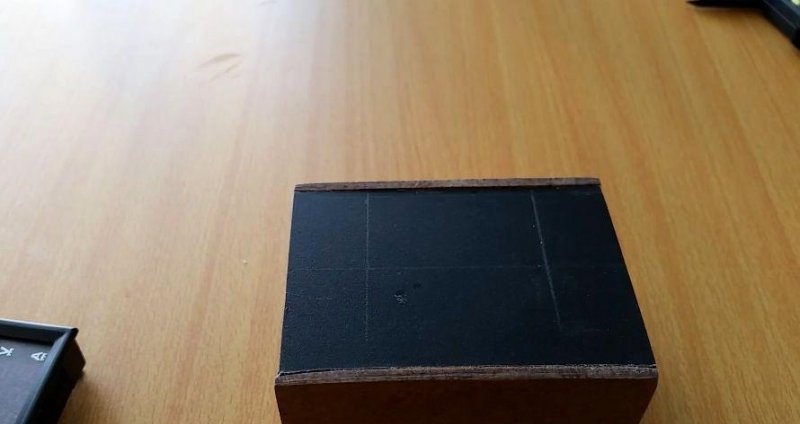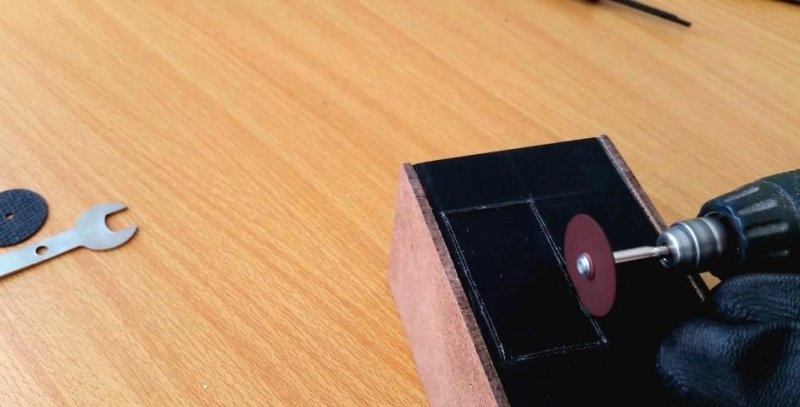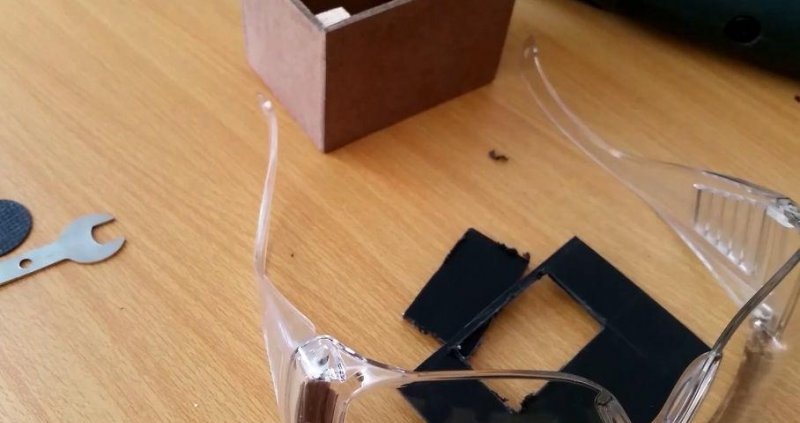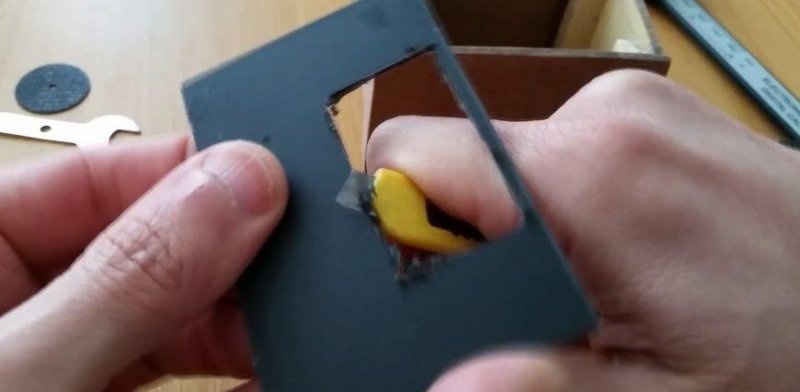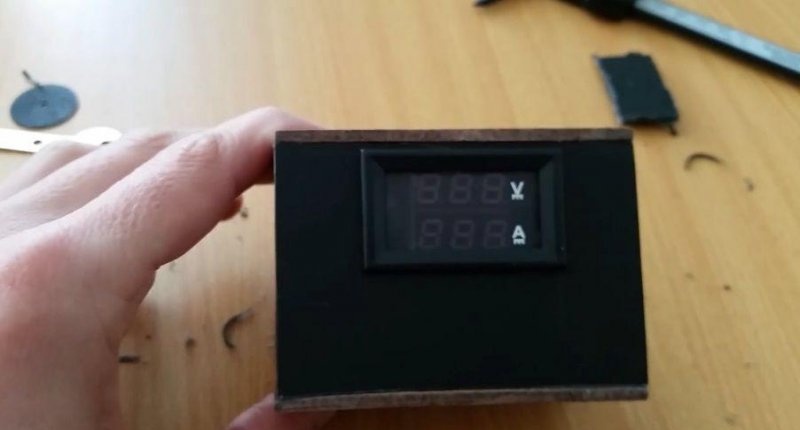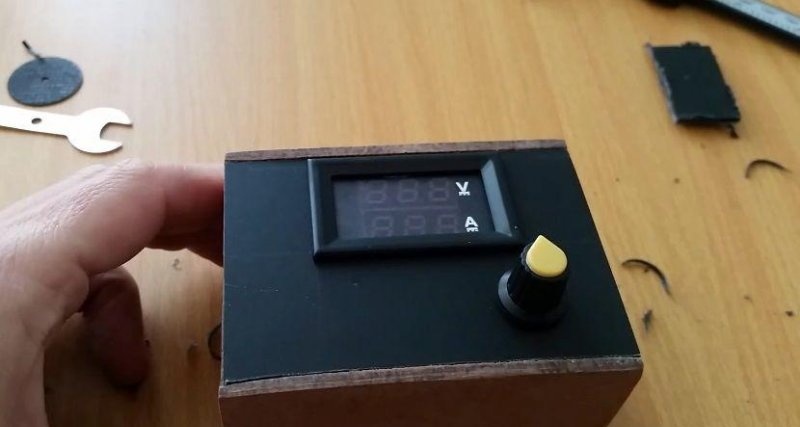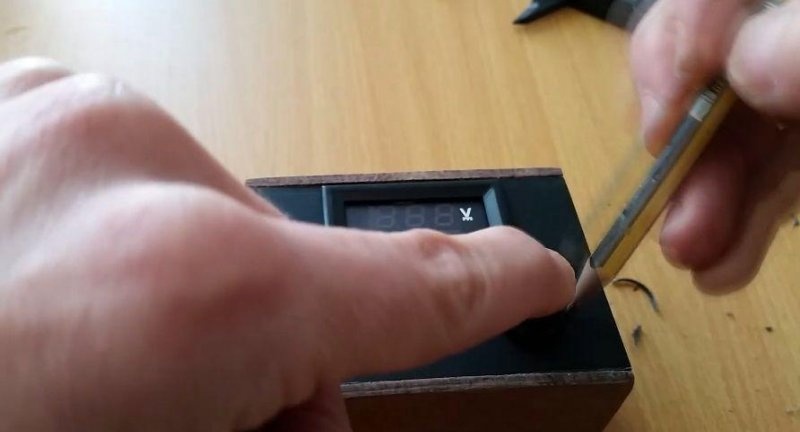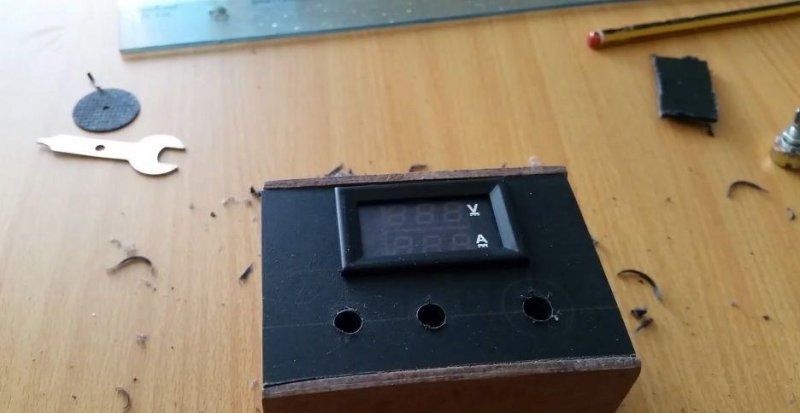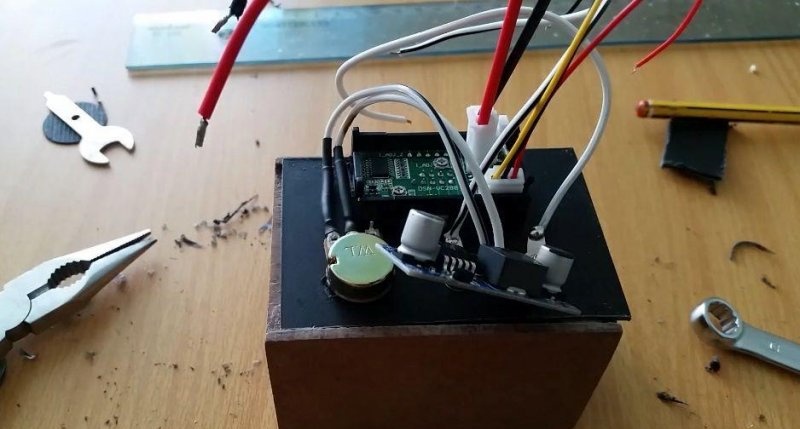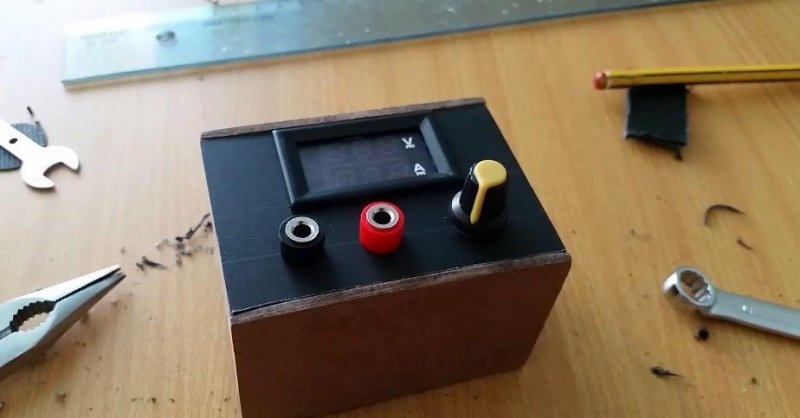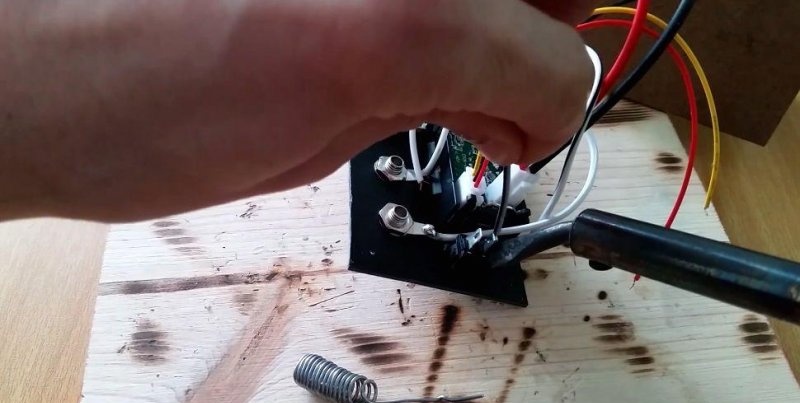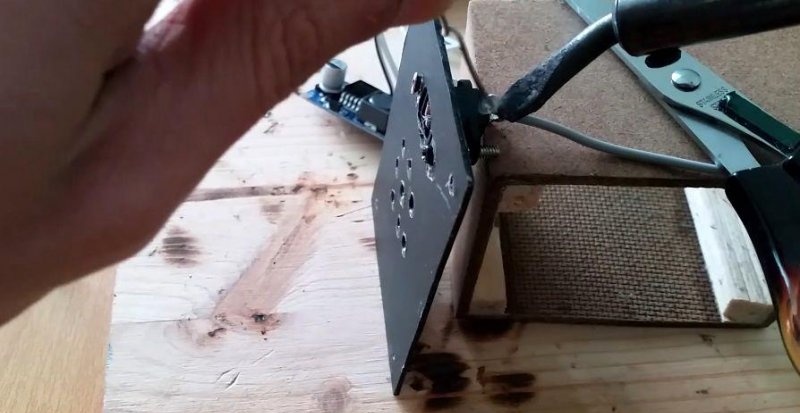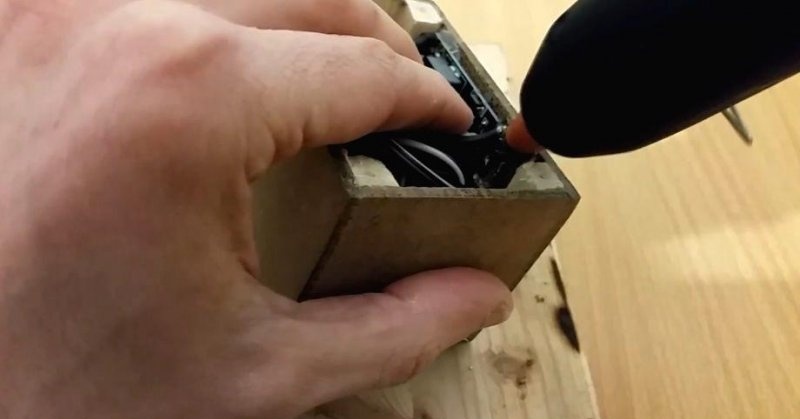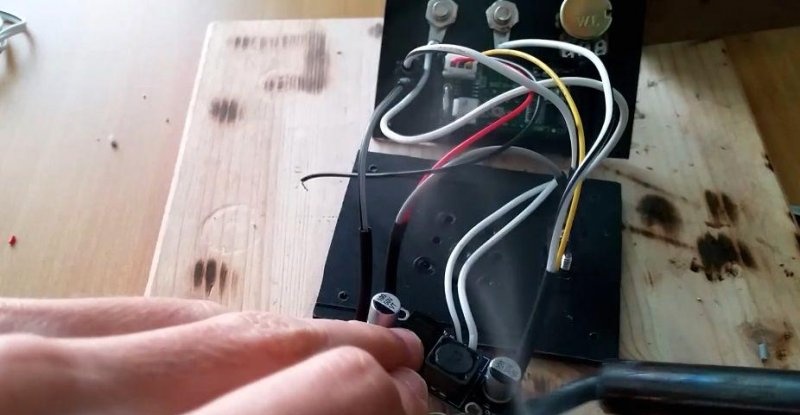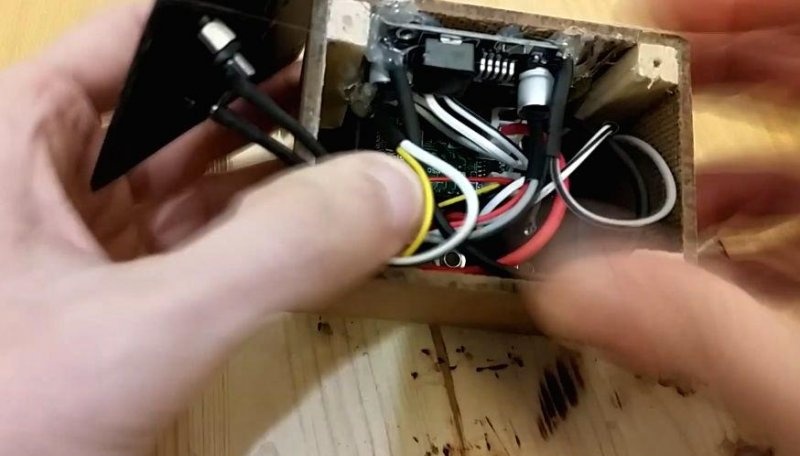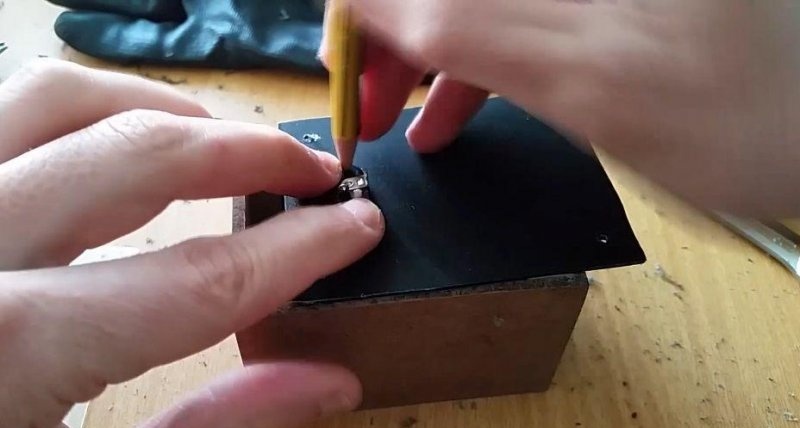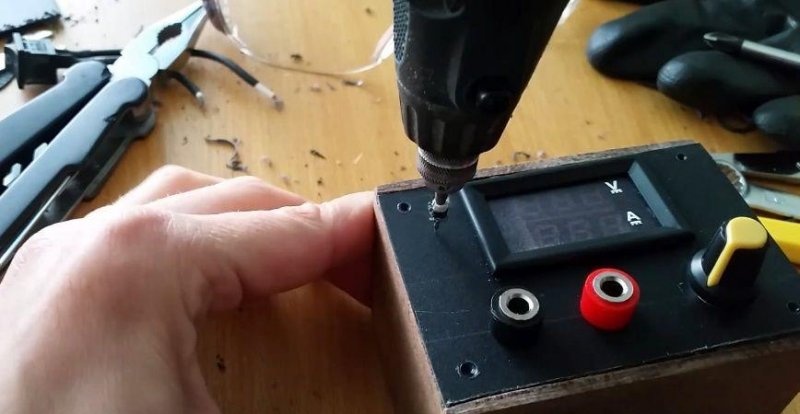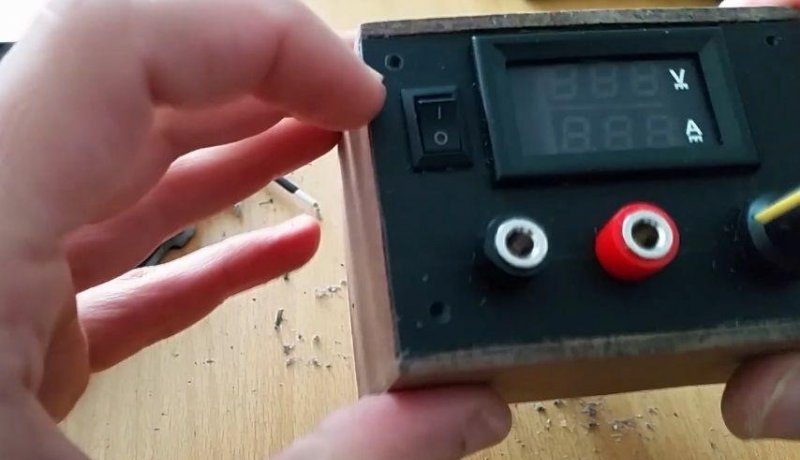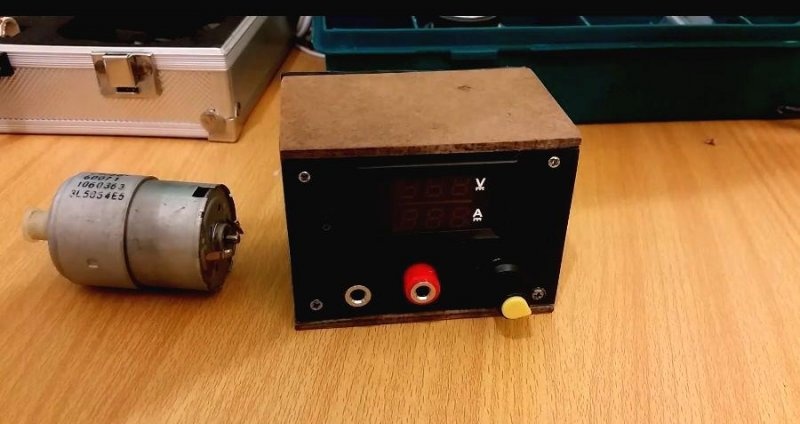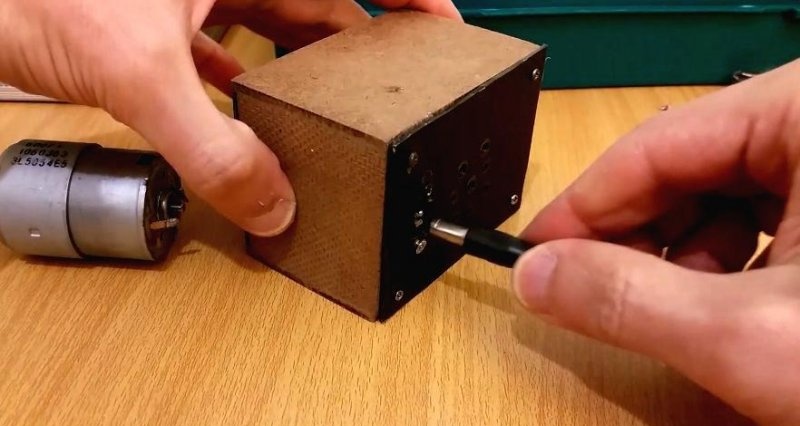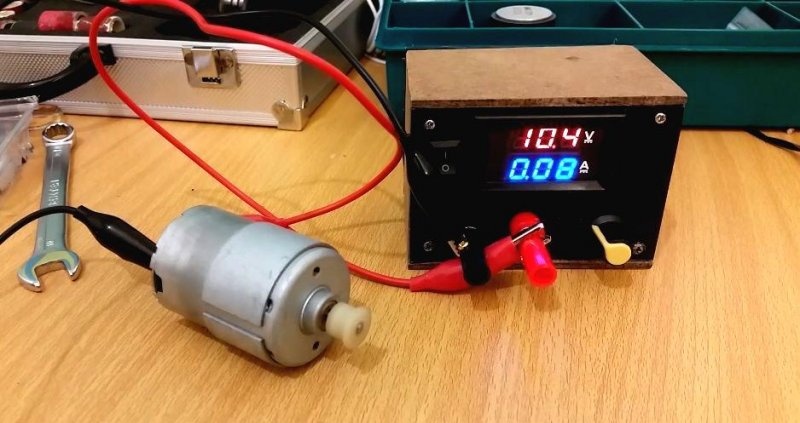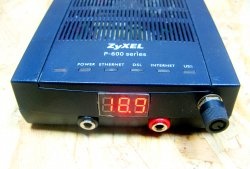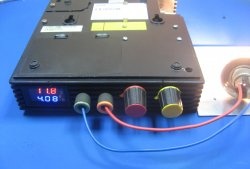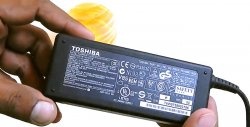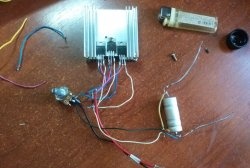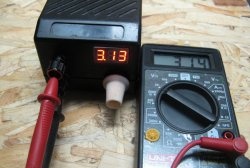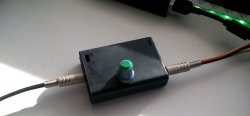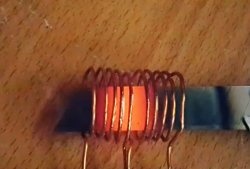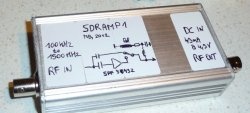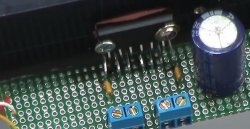Attachment-regulator to the power supply
This is a good and inexpensive way to make an adjustable power supply without much expense or effort. For example, I have a good 12 V and 2 A power supply. I will build an attachment for it, with which I can regulate the voltage over a wide range. Everything will be built on ready-made Chinese modules; all I have to do is make a housing for the device and connect everything with wires.
Necessary materials
Parts List (Purchase Links):
- - Ampere-voltmeter module.
- - DC-DC buck converter.
- - Variable resistor 10 KOhm.
- - Terminals 2 pcs.
- - Wires.
- - Connector for connecting the power supply.
- Plywood for the body.
- Slats for the body.
Preparing regulator housing parts
We break the plywood and cut out parts of the body. You will estimate the dimensions yourself so that everything fits. Of course, you can take a ready-made case and skip these steps, but I’m assembling a budget regulator.
We coat the ends with wood glue and clamp everything with a clamp. We wait until the glue dries.
Housing assembly
The front and back panels will be made of plastic, as it is easier to process and looks more solid.
I glued the racks into the corners of the slats to stiffen the whole structure.
We clean the protrusions.
The body is ready.
Refinement of the buck converter
This is a buck converter. You can apply up to 30 V to it and it will be regulated without any problems. Its load current is 1.5 A. Moreover, without radiators, it has built-in overheating protection. Since it is pulsed, it has a very high efficiency. Plus, the output voltage is perfectly stabilized.
All its modification comes down to replacing the tuning resistor on the board with an external variable one.
Solder off the tuning resistor.
Solder a variable resistor onto the wires.
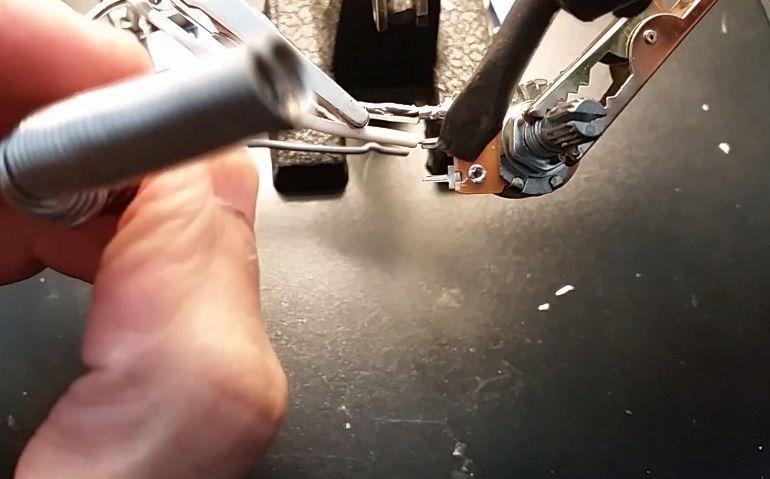
That's all the modification.
Assembling the regulator circuit
Here is the connection diagram itself.
Let's put together a diagram.
Everything is working. The ampere-voltmeter perfectly displays voltage and current.
Assembling the regulator attachment
We embed the ampere-voltmeter into the front panel. We drill holes for the connectors and variable resistor. We insert everything and the front part is ready. We fix the panel.
We connect all the parts. We attach the connector for the power supply input to the back wall.
We place the module on hot glue so that it does not dangle inside.
All is ready. But I forgot to say that I added a switch just in case. It is not needed, but suddenly I want to connect the set-top box to a battery.
The last step is to tighten the screws of the front and rear panels.
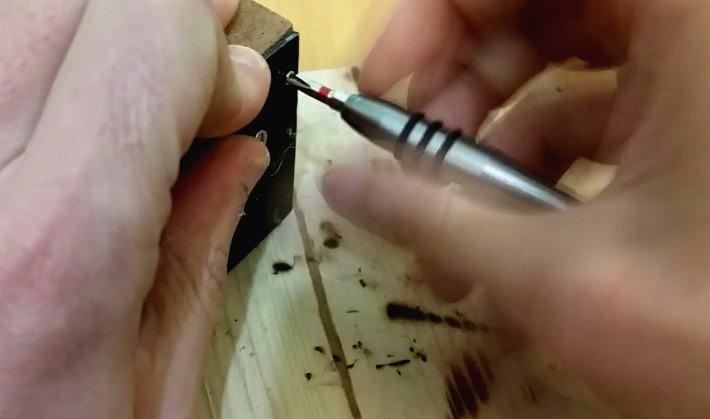
Checking the voltage regulator
We connect the power supply to the connector. We connect the load. Everything works amazingly! The adjustment is smooth.
Of course, it would be possible not to install a voltmeter with an ammeter, but how could we do without it?
Watch a video of making and testing a simple regulator
Similar master classes
Particularly interesting
Comments (2)

